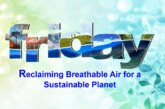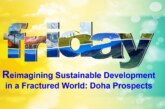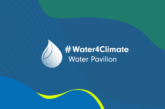
The summit arrives at a moment when the scaffolding of social contracts appears to be crumbling under the weight of relentless crises, where over half the global population reports little to no trust in their governments, and where 673 million still experience the gnawing pain of hunger despite producing enough food to feed every inhabitant of this planet. This gathering is not merely a diplomatic ritual but an existential reckoning with the question of whether multilateralism can still deliver on its foundational promise of leaving no one behind. Three decades after Copenhagen’s historic convergence placed people at the centre of development, the paradox persists: over 690 million remain trapped in extreme poverty, inequality has widened in two-thirds of countries, and 2.4 billion face exclusion while the pandemic exposed how fragile our progress truly was.
Dr. Arvind Kumar*
The world stands at a precipice where the echoes of promises made three decades ago reverberate through societies grappling with deepening fractures. As global leaders converge in Doha, Qatar, from November 4 to 6, 2025, for the Second World Summit for Social Development, humanity finds itself wrestling with a paradox as old as civilization itself: how to ensure that progress becomes inclusive rather than merely numerical. The summit arrives at a moment when the scaffolding of social contracts appears to be crumbling under the weight of relentless crises, where over half the global population reports little to no trust in their governments, and where 673 million still experience the gnawing pain of hunger despite producing enough food to feed every inhabitant of this planet. This gathering is not merely a diplomatic ritual but an existential reckoning with the question of whether multilateralism can still deliver on its foundational promise of leaving no one behind. Three decades after Copenhagen’s historic convergence placed people at the centre of development, the paradox persists: over 690 million remain trapped in extreme poverty, inequality has widened in two-thirds of countries, and 2.4 billion face exclusion while the pandemic exposed how fragile our progress truly was.
UN Secretary-General António Guterres reminds us that “poverty is not a personal failure; it is a systemic failure a denial of dignity and human rights,” underscoring the moral urgency of this moment. India’s journey exemplifies both promise and challenge millions escaped poverty in nine years, yet youth unemployment and regional disparities reveal how far we must travel. This demands transversality, recognizing that poverty, inequality, and climate vulnerability intertwine across the water-energy-food-health-education nexus, requiring integrated approaches that transcend conditional aid toward equitable partnerships.
A Persistent Paradox
Thirty years ago, in 1995, the world witnessed an unprecedented convergence in Copenhagen, where 117 heads of state united to place “people at the centre of development.” Emerging from a world scarred by Cold War divisions, pervasive poverty afflicting 1.3 billion people, and the social dislocations of structural adjustment, the Copenhagen Declaration crystallized around 3 interlinked pillars poverty eradication, full and productive employment, and social integration. Its transformative vision lay in recognizing that economic progress, social development, and environmental protection are not competing goals but interdependent foundations of sustainable development. The resulting Programme of Action marked a historic commitment to reorient values and priorities toward enhancing the quality of life for all.
Yet, the world of 2025 reveals a sobering paradox. Over 690 million people still endure extreme poverty, and billions more remain precariously close to it, their lives destabilized by conflict, crisis, and climate change. The World Social Report 2025 warns of eroding progress: income inequality has widened in two-thirds of countries, with the richest 1% now owning more wealth than 95% of humanity. Global youth unemployment stands at 13%, surging to 18.9% in China, reflecting a generation caught in uncertainty and underemployment. Nearly one-third of humanity about 2.4 billion people faces exclusion due to identity, circumstance, or socioeconomic barriers, while one in five report direct discrimination. Climate change intensifies every inequality, as 80% of the world’s poor live in hazard-prone regions trapped in a vicious cycle where disasters deepen poverty and poverty constrains resilience.
The coronavirus pandemic shattered the illusion of inexorable progress, revealing how quickly development gains could evaporate when social protection systems proved inadequate to absorb shocks. The mantra of “Build Back Better” emerged as governments grappled with the dual challenge of immediate crisis response and long-term resilience building. What COVID-19 laid bare was that market-first policies emphasizing deregulation, privatization, and austerity had failed to deliver inclusive social progress, instead sowing distrust and political anger. Countries with robust delivery infrastructure prior to the pandemic digital payment systems, comprehensive databases, and adaptive social protection responded far more effectively, demonstrating that proactive investment in social infrastructure pays dividends when crises strike. Yet the recovery remains fragile and uneven; food insecurity has doubled since 2019 with an additional 150 million people becoming food insecure, while only 3% of global climate finance flows to low-income countries despite their disproportionate vulnerability.
For India, the trajectory presents both remarkable progress and sobering challenges. The nation has witnessed MDP decline from 29.17% in 2013-14 to 11.28% in 2022-23, with 248 million people escaping poverty in just 9 years a feat that positions India to achieve SDG Target 1.2 well before 2030. Yet India’s SDG India Index 2023-24 reveals persistent vulnerabilities like youth unemployment among the 15-29 age group remains elevated at 14.6%, gender inequality persists across multiple indicators, and states like Bihar with 33.76% multidimensional poverty demonstrate how climate vulnerability intersects with deprivation. The challenge for India at Doha lies in translating its domestic success into actionable global frameworks while securing international support for social protection systems that currently reach only 51% of populations in low and middle-income countries, leaving two billion people without adequate coverage.
Way Forward
The WSSD 2025 offers a pivotal moment to move from rhetoric to results, as the Doha Political Declaration calls for integrated approaches that place social justice and inclusion at the core of peace, security, and sustainable development. It underscores the need for multilevel governance that translates global ambition into local implementation and for financing mechanisms that align climate and social development goals. The way forward demands transversality, recognizing that challenges of poverty, inequality, and climate vulnerability are interlinked across the water–energy–food–health–education nexus. True progress requires embracing solidarity as enlightened self-interest, advancing policies that confront structural inequalities through progressive taxation, universal social protection, and investment in public goods, while ensuring transparency and inclusion to rebuild trust. Ultimately, the international community must transcend conditional aid toward equitable partnerships grounded in national ownership, predictable financing, technology transfer, and capacity building especially for least developed and fragile states.
Just one week after Doha, this momentum must carry forward to Belém, Brazil, where COP30 will convene from November 10 to 21, offering an unprecedented opportunity for translating social development commitments into climate action. The nexus between social development and climate action is undeniable the 1.9 million people facing catastrophic hunger, the 58 million beneficiaries of climate-resilient economic inclusion programmes, and the reality that climate change could push 122 million more people into extreme poverty by 2030 demonstrate that social justice and climate justice are inseparable.
The Doha Summit’s focus on decent work, social protection, and inclusive development must inform COP30’s thematic days on human and social development, adaptation, and just transitions. The message Doha leaves for Belém should be unequivocal climate action that does not address poverty and inequality will fail, just as social development that ignores climate risks will prove unsustainable. By embracing transversality and nexus thinking, the global community can craft integrated solutions that deliver co-benefits across the 2030 Agenda.
*Editor, Focus Global Reporter






